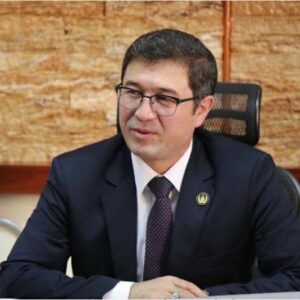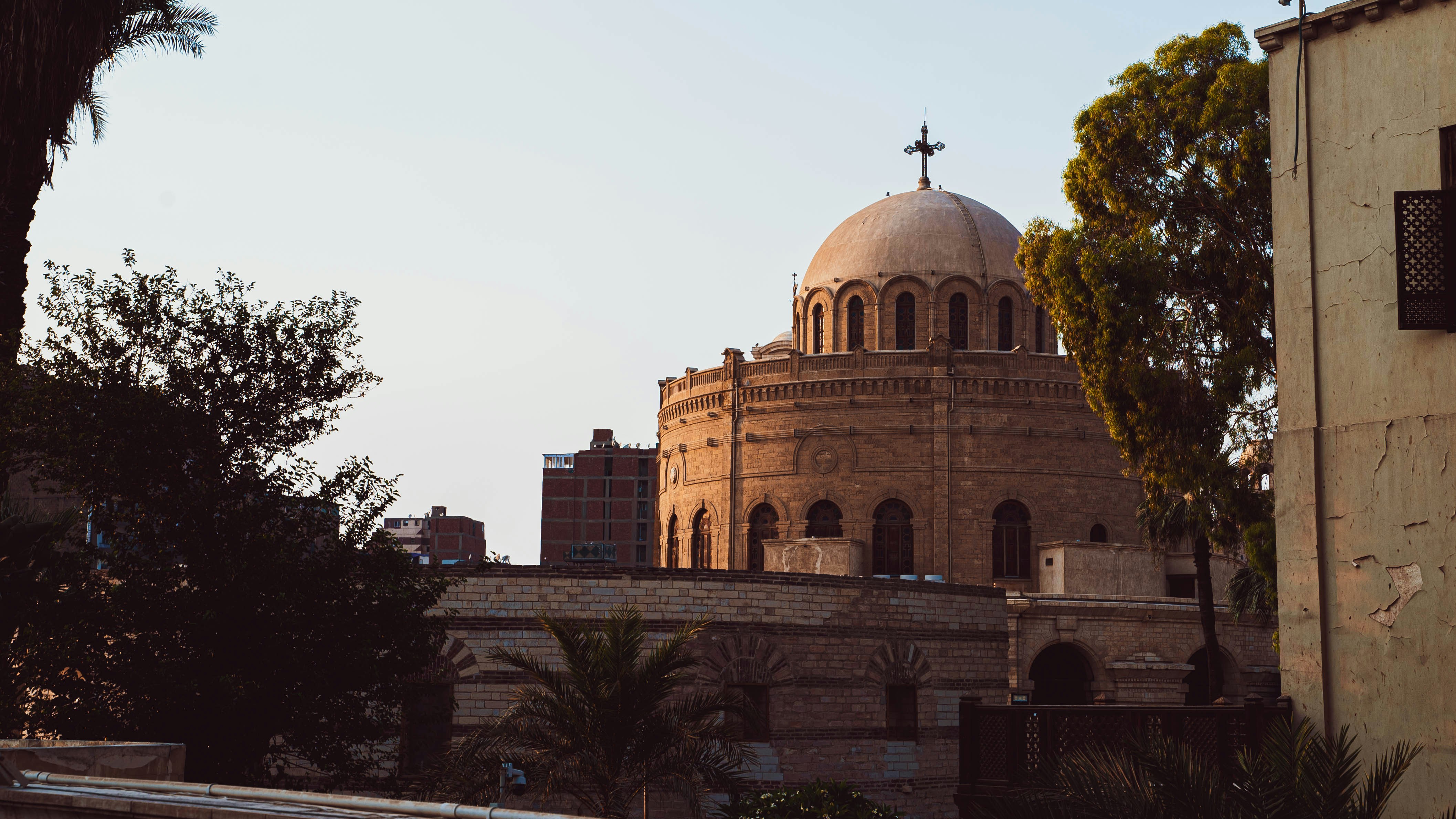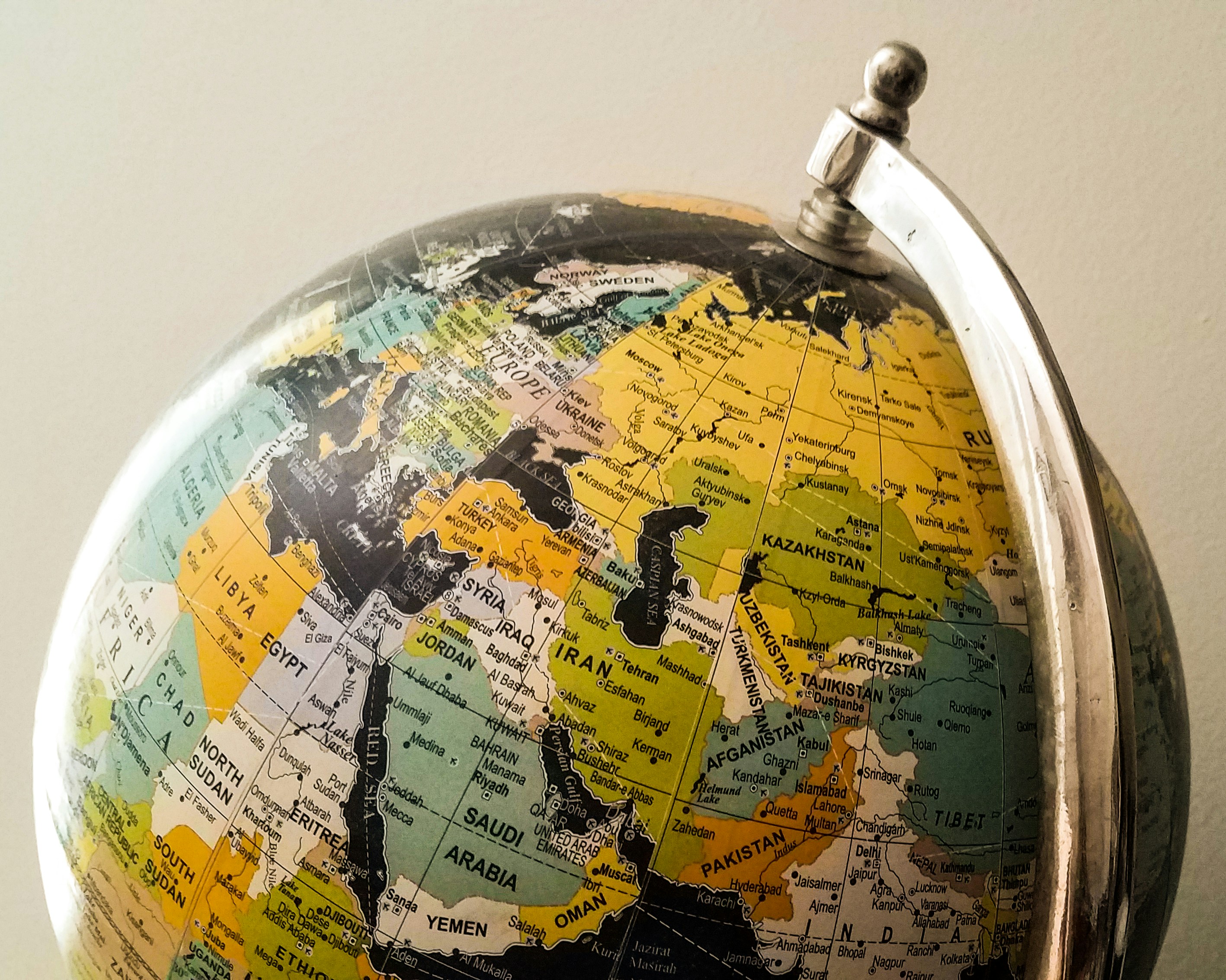Afghanistan: The Next Chapter
Cornerstone Forum Series
More than one year after the Taliban’s nearly unimpeded takeover of Afghanistan, religious freedom and associated rights in the country are spiraling towards an all-time low. The modest gains in these freedoms made over the past two decades risk complete erasure. The withdrawal of NATO forces and subsequent rapid fall of the previous government in 2021 sparked an emergency evacuation of the international community and of Afghans who supported their work. With energies focused on the closure of diplomatic offices and the withdrawal, there has been limited contact with actors remaining in Afghanistan.
This series invites scholars, diplomats, and regional and policy experts to share their insights into the country and provide recommendations to ensure protections for religious and ethnic minorities and other vulnerable communities, including women and children, across the country.

The unexpected collapse of the Afghanistan government and the return of the Taliban on August 15, 2021 has proven to be catastrophic for the country. Within the past year, ethnic and religious minorities have been victims of systematic and targeted attacks, forcing them to leave the country or to stay without any protected political and religious rights.
The Taliban has abolished the 2004 Constitution and pushes toward full implementation of sharia law according to their interpretation, which provides no legal protection for the fundamental human rights of the citizens, especially for the ethnic and religious minorities.
The suicide attack of September 29, 2022, on Kaj Educational Center that killed more than 55 girls and wounded more than 112 was just one of more than 300 attacks targeting Hazaras in Afghanistan, which are documented by several organizations. The country’s fledgling economy has collapsed, with increased unemployment and more people falling under the poverty line. Revenge killings, the assassination of former government employees, war crimes, and atrocities against certain ethnic groups have been daily manifestations of the Taliban’s rule, while their rank and file enjoy full impunity for their crimes. ISIS-K, responsible for some of the deadly attacks against the Hazaras, together with other terrorist networks have increased their presence and intensified their operations in Afghanistan.
Within the past year, Afghanistan has witnessed a mass exodus of talented Afghans. In the government and academic institutions, the Taliban has replaced educated and well-experienced cadres with local Talib clergies, which has only exacerbated the situation and leaves no options for the educated generation of Afghanistan other than to flee the country.
Urban-Rural Split and the Triumph of Traditionalism
From a historical perspective, the Taliban’s takeover marked the victory of both traditionalist forces and rural elites after a century-long struggle to overcome the urban elites, who long-represented the desire for modernization and changing the traditional setup of politics and society, whether through a liberal or a leftist approach.
History reminds us that in each such clash and confrontation, rural elites and traditionalist forces have appeared triumphant. Citing examples from the modern history of Afghanistan, King Amanullah’s modernization failed in the face of a massive revolt of the traditional forces led by rural elites. The leftist movement that ascended to power after a bloody coup d’état in 1978 faced the same rebellion and defeat. Finally, although the rural-urban split was transformed by four decades of social and political upheavals as well as war and violence, the urbanization process, mass education, and the post-Bonn democratization process met a similar destiny.
Explaining the whole dynamic of change and continuity within this framework – the urban vs. rural and modernism vs. traditionalism framing – might be an oversimplification of a complex interplay of several factors. Still, it helps to elucidate the fundamental and core aspects of the vicious cycle of retrogressive failures in Afghanistan.
Unfinished State-Making and the Burdens of the Past
The key explanation for this continued failure to change the traditional politico-religious outlook in Afghanistan is deeply rooted in the state-making process in the 1880s. Transforming the country from a tribal confederation into a modern state, first and foremost, emboldened religious circles and traditional forces to earn legitimacy in a traditional mechanism and garner social support from a predominantly rural and peasant society. It also activated ethnic boundaries by suppression and subjugation of non-Pashtun ethnic groups.
Abdur Rahman Khan, known as the ‘Iron Amir’ for his cruelty and ruthless suppression of rival tribes and ethnic groups, initiated a full-fledged war with extensive use of coercive force and unprecedented brutality to create a centralized administration in the country, which resulted in an “ethnically polarized Afghanistan.”1
The state formation of Afghanistan, therefore, caused the activation of ethnic dynamics, politicization of ethnicity, and cultivation of ethnic hatred among Afghanistan’s multiple ethnic groups. State formation in Afghanistan most resembled the formation of states in Europe and can be better explained in a “bellicist account.” Charles Tilly, in his theory of war-making and state-making, argued that nation-states “did not develop one by one and form a system by juxtaposition”2; instead, they were the outcome of the extensive war, extraction, and repression that “began with the effort to monopolize the means of violence within a delimited territory.”3
To form a state with highly centralized control, Abdul Rahman first suppressed opposition among Pashtuns and mobilized them with plunder as their reward. He then waged war against other ethnic groups in a way that, in terms of Tilly’s understanding, marked the “largest organized crime” in Afghanistan’s history. Ethnicity, the domination of Pashtuns, and religion were the main components of his campaign for crafting the new Afghan state that would serve to buffer between Tsarist Russia and the British Empire.
He used Islam both to legitimize his rule and to justify his cruel and excessive violence in suppressing any rebellion. In an effort to suppress the Hazaras rebellion, he gathered Sunni clergy to issue a fatwa against Hazaras as infidels, who came to suffer the most among all other ethno-religious groups in Afghanistan. Nearly 60 percent of the Hazara population was killed or fled the country, and many others were sold into slavery all around the country.
These massive ethnic atrocities had a deep impact on the future political trajectory of the country, and never came to be acknowledged or healed. While in Europe the pursuant constitutional orders served to heal the society based on the values of liberty and equality, in Afghanistan, Abdul Rahman’s method was emulated and followed by his successors. As Ahmad Rashid described the first takeover of the Taliban, Abdul Rahman’s “zombielike shadow still looms large over the country and its politics.”4
In this sense, Afghanistan gave the Pashtuns a state in world geography at the expense of other ethnic groups and religious minorities. While Pashtuns were divided between Afghanistan and Pakistan, President Mohammad Daoud Khan (1973-1978) pushed forward the agenda for Greater Pashtunistan, which aimed at the unification of Pashtuns in both counties and carving a unitary state for Pashtuns that later proved to be disastrous for Afghanistan. The fall of Daud’s republic by the pro-Russian leftist groups of Khalq and Parcham in 1978, and the nexus of conflicts that developed in its aftermath, unsettled the traditional political order and social structure in Afghanistan.
A particularly important development in shaping the future trajectory of Afghanistan was perhaps the advent of Islamic fundamentalism in its jihadist manifestation, nourished and nurtured during the jihad against the occupation forces of the Soviet Union. Jihadist Islamism became a major tendency for all Islamist resistance movements among all ethnic groups until the withdrawal of the Soviets from Afghanistan in 1989, which ultimately put the question of the political system and power at the top of the agenda for all political factions.
Most Islamist movements redesigned their political outlook and framed it into a more ethnic or linguistic one that would enable ethnic mobilization and establish a vast network of ethnic influence and support. As the old grievances and ethnic boundaries reactivated in Afghanistan politics, the country slipped into a bloody civil war with destructive outcomes.
With the continuation of civil strife and ethnopolitical factions’ struggle for power, the Taliban emerged in 1994 as a new political force to restore the traditional order. They mobilized support based on religious motivation and ethnic manifestation. The Taliban followed the path of Abdul Rahman with the brutal suppression of all rival groups, and denial of political significance or the presence of other ethnic groups. They imposed a strict sharia rule, mostly demonstrated by the exclusion of non-Sunni Hanafi sects, gender segregation, mandatory hijab, religious observation and what they called Islamic dress.
The 2001 invasion of Afghanistan by the United States and the counter-terrorism coalition following the 9/11 terrorist attacks curiously twisted the fate of the country. After the ousting of the Taliban regime, the Bonn Agreement introduced a consociational political arrangement that helped stabilization of the situation and led to constitutional and democratic order in 2004. The new constitution enshrined human rights, equal rights and obligations for all citizens, and provided legal protections for religious minorities.
Within two decades, despite all discrepancies and challenges—including the insurgence of the Taliban—inter-ethnic relations had improved, with the majority of Afghans tending to support a democratic order in which all ethnoreligious groups could coexist and enjoy equal rights and opportunities. But two decades later, Afghanistan’s fate was twisted back to its original position.
Return of the Totalitarians
Following their takeover in 2021, the Taliban installed a totalitarian regime based on their interpretation of sharia, rejecting democracy as the evil of the West, and all man-made laws – including a constitution that would define a contractual relationship between the state and its citizens. This legal void has placed all citizens, but especially minority groups, at the mercy of the Taliban forces.
The Taliban instrumentalize ethnic sentiments and incite hatred among Afghanistan’s multiple ethnic groups. The group’s new extremism is a hybrid of the ethnocentrism of Pashtuns and Islamic radicalism, which has made them more brutal and less flexible in accepting a participatory constitutional order and reinstitution of the principles of popular sovereignty.
In a sense, the Taliban are the reincarnation of Abdul Rahman, with added flavors in terms of ethnic and religious extremism. For the most vulnerable ethnic and religious minorities, it has been totally catastrophic. Afghanistan, once home to 55 ethnic groups speaking 45 languages, is losing its cultural diversity.
More than 200,000 Sikhs once resided in Afghanistan. But on August 13, Afghan Sikh leader Gurnam Singh told the Economic Times of India that only 100 Sikhs had remained in Afghanistan. Zablon Simintov, Afghanistan’s last Jewish citizen, was evacuated in September 2021. The Kirghiz minority of about 1,500 people – located in the far north-eastern Pamir corridor of the country – is set to be transferred to Kirghizstan by 2024.
In the absence of a constitution that would enshrine and ensure equal rights and access to all ethnolinguistic or religious groups, the Taliban is imposing a cultural monopoly by continued discrimination against and targeted attacks on minority groups.
Hazaras, a religious and ethnic minority and one of the four major ethnic groups of Afghanistan — including Pashtuns, Tajiks, and Uzbeks — have also endured deteriorating security since the Taliban returned to power. ISIS-K increasingly attacks Hazara schools, mosques, and cultural centers. Hazaras are even targeted in open streets and shopping centers. The Taliban, while failing to ensure their security, have continued their own repressive policies toward the Hazaras. These include persecution, driving them out of their lands, and denying them all political and religious rights. This unprecedented wave of targeted attacks has been documented by several domestic and international organizations. The UK House of Commons and House of Lords, in a joint report in August 2022, stated that “Hazaras were at serious risk of genocide at the hands of the Taliban and ISIS-K.”
But history provides enough evidence that a radical, ethnocentric, and brutal regime is not going to last long unless they adopt more conciliatory and participatory politics based on a constitutional order. Ethnicity has been a major driving force of conflicts in Afghanistan, and it remains so as long as exclusion and repression continue to exist.
The Uncertain Path to the Future and the Only Option
For Afghans to reclaim their future, they need to tackle the present challenges with tact and tolerance. There are two options to drive this change: war or negotiation.
With regard to war, Afghanistan has suffered the consequences of war and violence for over four decades. No one should reasonably desire more violent conflict. But war can be seen as more desirable than the status quo out of desperation.
Therefore, the resumption of intra-Afghan dialogue for a negotiated political settlement is the ideal way out of the current quandary in Afghanistan. Such talks should focus on establishing an inclusive government, returning to constitutional order, respect of human rights, effective separation of powers, and equal rights and duties of all citizens. An important basis for this is the Doha Agreement, signed by the Taliban and the United States in 2020, which emphasizes a new post-settlement Afghan Islamic government as determined by the intra-Afghan dialogue and negotiations.
Given the current circumstances, intra-Afghan dialogue should be held under the auspices of the United Nations with earnest and strong support from the international community and the United States. It is time for Afghans and the international community to set a new agenda for peace, reconciliation, and inclusion in Afghanistan and to coordinate all domestic, regional, and international efforts for reaching a settlement that would open a new chapter for the country.
Otherwise, there will be no new chapter, but rather the vicious cycle of violence that has marked the country for generations. Afghans need to, once and for all, tackle the latent challenges of state-building and embittered inter-ethnic relations and depart from the past toward a brighter future.
***
[1] Saikal, Amin, Modern Afghanistan: A History of Struggle and Survival, London: I.B. Tauris, 2004, p. 25. [2] Tilly, Charles, “Reflections on the History of European State Making”, in The Formation of National States in Europe, ed. Charles Tilly, Princeton: Princeton University Press, 1975, pp. 3-83. [3] Tilly, Charles, “War Making and State Making as Organized Crime,” in Evans, Peter B., Dietrich Rueschemeyer, and Theda Skocpol (eds.) Bringing the State Back In, Cambridge: Cambridge University Press, 1985, p. 171. [4] Barfield, Thomas, Afghanistan: A Cultural and Political History, Princeton: Princeton University Press, 2010, p. 12.Dr. Mohammad Qasim Wafayezada was the Minister of Information and Culture for the former Afghan government. He previously served in different capacities, including the DG of the Afghanistan Civil Aviation Authority. He holds a Ph.D. in International Relations from Kanazawa University, Japan, where he teaches post-conflict peacebuilding after fleeing the country in 2021. He is the author of “Ethnic Politics and Peacebuilding in Afghanistan”.
THE RFI BLOG

RFI Submits Report on Landscape of Religious Freedom in America to Religious Liberty Commission

It’s Time to Restore American Leadership on International Religious Freedom

It Is Time for Decisive Action to Combat Global Persecution of Christians

Religious Freedom is at a Crossroads in U.S. Foreign Policy

U.S. Must Address Nigeria’s Christian Persecution
CORNERSTONE FORUM

Reaffirming Religious Freedom: Bridging U.S. Advocacy and Iraq’s Constitutional Framework

Political Polarization, Same-Sex Marriage and Religious Liberty

Bridging the Gap Between International Efforts and Local Realities: Advancing Religious Freedom in the MENA Region

Challenges to Religious Freedom in Iraq and the Critical Need for Action

